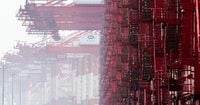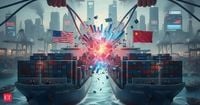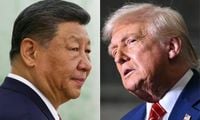Markets trembled and political rhetoric soared this week as the United States and China reignited their trade and technology war, thrusting the global economy into a new era of uncertainty. On October 9, 2025, Beijing imposed sweeping export controls on rare earth minerals, materials essential for everything from defense systems to electric vehicles and clean-energy industries. Just a day later, U.S. President Donald Trump fired back, announcing a dramatic 100 percent tariff on all Chinese imports starting November 1. This move will push total U.S. duties on Chinese goods above a staggering 130 percent, according to The Economic Times and Business Times.
These tit-for-tat measures mark not just the latest escalation in a years-long struggle, but a fundamental shift in how the world’s two largest economies wield their economic power. Gone are the days when trade was about growing exports or boosting competitiveness. Now, it’s about control—over minerals, chips, energy, and technology. Both Washington and Beijing are using trade as a weapon in their broader geopolitical contest, and the rest of the world is feeling the tremors.
The roots of this conflict stretch back to 2018, when the U.S. began blocking China’s access to advanced semiconductors, chipmaking tools, and artificial intelligence software. These restrictions were steadily expanded in October 2022 and again in December 2024. Under American pressure, key players in the global semiconductor supply chain—Japan, the Netherlands, and South Korea—also imposed similar restrictions, effectively cutting China off from the most advanced chipmaking ecosystem, as reported by Business Times.
But China had been preparing its own countermove for decades. Quietly and methodically, Beijing built near-total dominance over the global rare-earth supply chain, acquiring mines in Chile, Australia, and Congo, and developing domestic refining and magnet-making capacity. Today, China controls 70 percent of global rare earths refining. This industrial advantage has now been transformed into geopolitical leverage—a mirror image of America’s dominance in semiconductors.
When Beijing imposed export controls on rare earths on October 9, it struck at a critical American vulnerability. The U.S. is heavily dependent on China for these minerals, which are vital for defense, clean energy, and many high-tech manufacturing sectors. According to Reuters, if China were to cut off rare earth supplies completely, the U.S. stockpile could be depleted in as little as 90 days. Despite years of warnings and efforts to diversify, the U.S. remains almost entirely reliant on Chinese rare earths, and lead times for developing domestic supply stretch out for years—likely not sufficient until at least 2028, as Business Times notes.
Trump’s response was swift and severe. On October 10, he announced the 100 percent tariff on Chinese imports, a move that sent shockwaves through financial markets. U.S. and European markets tumbled on the news, with an index tracking Nasdaq-listed China stocks dropping 6 percent and the U.S.-listed KraneShares CSI China Internet ETF plunging 7 percent. Across Asia, markets initially fell sharply—Hong Kong’s Hang Seng Index slumped as much as 3.1 percent before closing 1.5 percent lower, while the Shanghai Composite Index and CSI 300 both pared early losses but still ended down for the day. Singapore’s Straits Times Index and Australia’s ASX 200 also saw declines, as reported by Business Times.
Yet, despite the volatility, many analysts and investors expect the sell-off to be less severe than the panic-selling seen earlier in April, when Trump first kicked off a global tariff war. "In the short term, the revived trade war will weigh on China's stock market," said Wang Yapei, a Shanghai-based hedge fund manager, according to The Economic Times. Still, he expects the turbulence to be short-lived, betting that both sides will ultimately seek negotiation, as "the cost of large-scale conflict is too high for both powers." Others, like Charles Wang of Shenzhen Dragon Pacific Capital Management, believe that China's proactive restriction of rare earth exports demonstrates its intent to use its leverage before the U.S. can develop alternative supply chains.
Beijing, for its part, described Trump’s tariffs as hypocritical and defended its rare earth export curbs, but stopped short of imposing new levies on U.S. products. On October 12, China signaled it would retaliate if Trump did not back down, according to state news agency Xinhua. However, the overall consensus among market strategists is that the latest flare-up is more political posturing than a lasting escalation. Many expect that both sides will eventually return to the negotiating table, with Morgan Stanley suggesting that "the most likely outcome is both giants will return to another form of a deal with continued tariff pauses, punctuated by periods of temporary escalation."
Still, the stakes are high. The U.S. depends heavily on China for everyday goods—66 percent of laptops, 81 percent of smartphones, 74 percent of toys, 80 percent of cutlery, 93 percent of umbrellas, 90 percent of table fans and ovens, 96 percent of vacuum flasks, and 99 percent of blankets come from China, according to Business Times. The new tariffs threaten to double consumer prices, raise anger among American shoppers, and hurt U.S. manufacturers who rely on Chinese components. For China, the tariffs will hit export-oriented sectors hard, including electric motors, electrical equipment, nuclear reactors, boilers, machinery, furniture, and bedding. Xiangcai Securities warned that "it will wipe out profit at most Chinese exporters" if the increase materializes.
Meanwhile, China’s export machine is showing surprising resilience. On October 13, Chinese shipments overseas grew at the fastest rate in six months, exceeding forecasts and giving Beijing a stronger hand in the ongoing trade war, according to Bloomberg. This export growth is seen as a sign that, despite the tariffs and tensions, China’s economy is still competitive on the global stage. Some analysts believe the correction in Chinese stocks could even create buying opportunities, particularly in sectors like artificial intelligence, robotics, defense, innovative drugs, and chipmaking, all of which benefit from Beijing’s drive for self-sufficiency amid the threat of a Sino-U.S. tech decoupling.
Other countries are watching the standoff nervously—none more so than India. India is critically dependent on Chinese supplies across sectors, especially pharmaceuticals, electronics, and clean-energy industries. For example, China supplies 97.7 percent of India’s erythromycin and 88.1 percent of its antibiotic imports. In electronics, Chinese firms provide 96.8 percent of silicon wafers, 86 percent of flat-panel displays, and 80.5 percent of laptops. The clean-energy sector is similarly exposed, with 82.7 percent of solar cells and 75.2 percent of lithium-ion batteries coming from China. Although Beijing eased some export curbs in August 2025, allowing exports of fertilizers, rare earths, and tunnel-boring machines to India, the underlying dependence remains acute.
For India, the lesson is clear: reducing critical reliance on China must become central to its industrial policy. This means not only localizing production of low- and mid-tech imports through reverse engineering, but also building vertically integrated ecosystems for advanced components, supported by substantial innovation funding. As the U.S.-China trade deal from May 2025 now stands void after the new tariffs, India is reminded that no deal with the U.S. is ever truly final—politics, not predictability, increasingly drives trade policy in Washington.
As the world’s two superpowers spar over minerals, chips, and technology, the era of predictable, rules-based trade is giving way to a world of weaponized commerce. For businesses, investors, and policymakers everywhere, the message is unmistakable: resilience, diversification, and strategic autonomy are now more important than ever.



